BEASTIE BOYS STORY (2020)
Mike Diamond and Adam Horovitz of Beastie Boys tell the intimate, personal story of their band, and their 40 years of friendship.
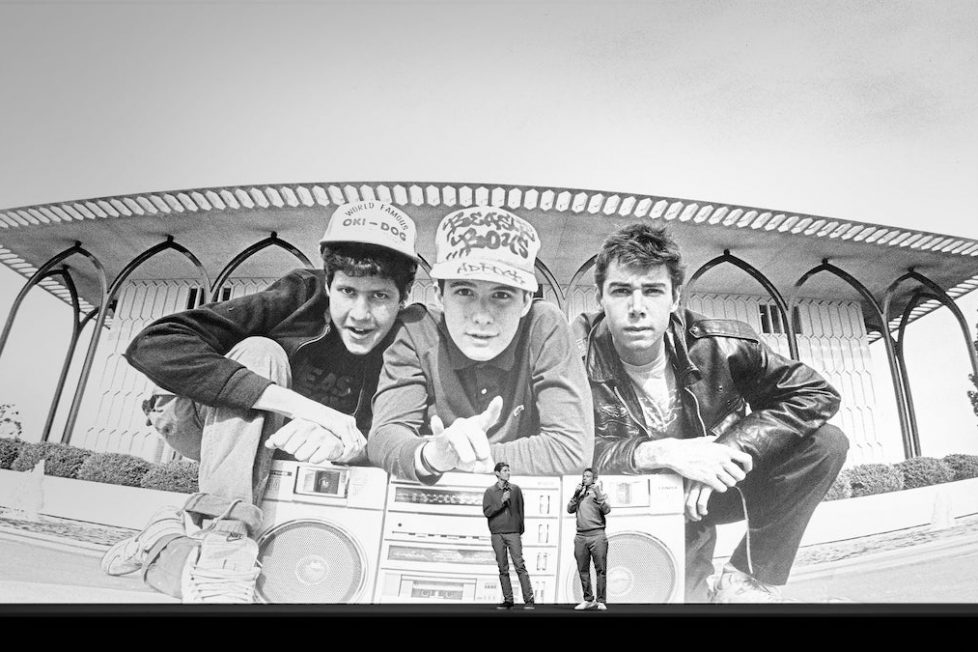
Mike Diamond and Adam Horovitz of Beastie Boys tell the intimate, personal story of their band, and their 40 years of friendship.


It was 1993 when aspiring filmmaker Spike Jonze and Beastie Boys first met in Los Angeles. Jonze and the rap-trio were rising stars of their respective fields. It was the Golden Age of MTV where emerging talents like Jonze could catch a break directing music videos, and Michael “Mike D” Diamond, Adam “Ad-Rock” Horovitz, and Adam “MCA” Yauch (a.ka. Beastie Boys) had already released two albums. The group were anticipating the release of their third record Check Your Head when they first collaborated with Jonze on the music video for “Time For Livin”. Jonze formed a longtime collaboration with the band, returning to direct music videos for them like “Sure Shot” and “Sabotage” before his Hollywood film career took off with Being John Malkovich (1999). He even returned to direct “Don’t Play No Game That I Can’t Win” in 2011.
In 2018, Diamond and Horovitz released the Beastie Boys Book. The New York Times’ bestseller was a 571-page memoir as unconventional and brilliant as their music. Packed with anecdotes, photographs, illustrations, recipes, mixtape playlists, and gig flyers, it also served as a heart-wrenching tribute to their friend and bandmate Yauch, who had tragically passed away from cancer in 2012. Co-written by Jonze and billed as “a new format… a live documentary”, Beastie Boys Story sees Diamond and Horovitz take the stage at Brooklyn’s King’s Theatre, to trade stories, home videos, and photos, adding more colour to an already colourful tale. Beastie Boys Story wasn’t just about how three middle-class white boys became the world’s biggest-selling rap band (an accolade they still retain), it was about all of the fun stuff in-between.
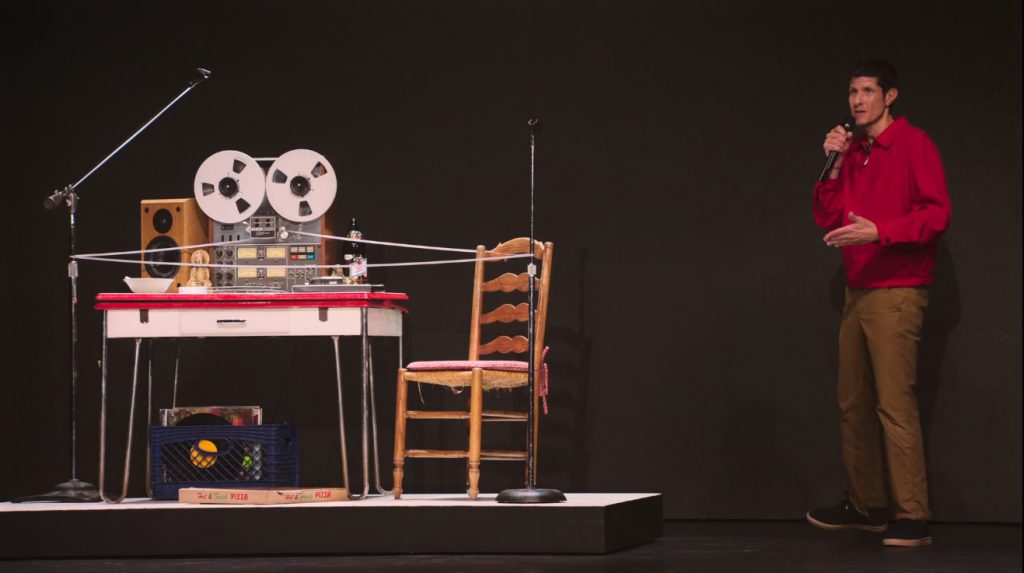
The tale of the influential rap group is told by Diamond and Horovitz onstage to a live audience. The format feels like a hybrid of VH1 Behind the Music episode and a live stand-up comedy gig. While the band’s story is theatrically scripted and doesn’t contain anything groundbreaking for existing fans of the band, their off-the-cuff wisecracks and outpouring of emotion are clearly spontaneous. With the Academy Award-winning director Jonze helming both the film and the stage show, the beats are tight and entertainment is undeniable. Understandably, like most music docs, the formulaic structure of archival images, live footage, and interviews with members or people in their inner circle play like a PowerPoint presentation. However, having Diamond and Horovitz’s stories weave in and out of the presentations allows for a more intimate look at the group’s history.
The most striking aspect of Beastie Boys Story is how Jonze, Diamond, and Horovitz manage to capture the concept of evolution—not only as a band but, most importantly, as human beings. In the late-1970s and early-’80s, connecting over their love of bands like The Clash and Bad Brains, Diamond founded the band with a bunch of his friends. Horovitz and Yauch only joined later and they became interested in rap and hip-hop, so started added rhymes into their songs almost as a joke. It paid off. By 1986 they were opening for Madonna and had released their fourth single “(You Gotta) Fight for Your Right (To Party!)” to wide acclaim. It was this point their management at Def Jam Records started pushing the group’s image as drunken frat boys to help draw attention.
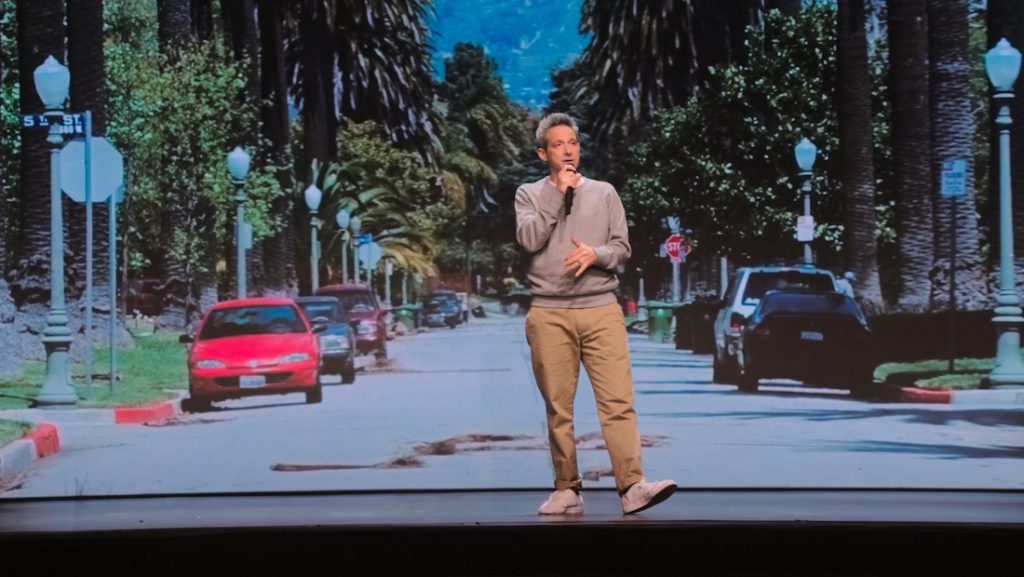
After the release of their first album, License To Ill, the boys learnt some hard lessons from corporate manipulation. Excessive touring and the trials and tribulations of the music industry resulted in the band going their separate ways in 1988. During such a bleak period, it gave them enough time to re-evaluate their lives. Diamond and Horovitz are honest about this time of their careers, even poking fun at Horovitz’s attempt to break into Hollywood by starring in Lost Angels (1989). It’s here where Beastie Boys Story involves the conception and execution of their second album, Pauls Boutique. Hailed as a masterpiece now, at the time it was released to the sound of chirping crickets. However, its unexpected failure fed the creative expression of their third album in 1992, Check Your Head, where the band went back to their roots and began playing instruments again.
It’s here where Jonze takes on an elegiac tone, with Diamond and Horovitz expressing various regrets. Touching on the treatment of the original drummer, Kate Schellenbach, and how she was unceremoniously spurned from the group because she didn’t fit their ‘party guy’ personas. Horovitz admits “it’s shitty the way it all went down.” The documentary attempts to sugarcoat the ugly and sexist (at the time) world of hip-hop. However, how Diamond and Horovitz highlight the importance Schellenbach had on their lives and career, revealing how guilty they feel about the situation. Another touching moment is when Horovitz dejectedly reads the lyrics to their controversial single “Girls”. It’s clear they’re ashamed of their past behaviour and there’s a great level of introspection on display, for both their professional and personal missteps.
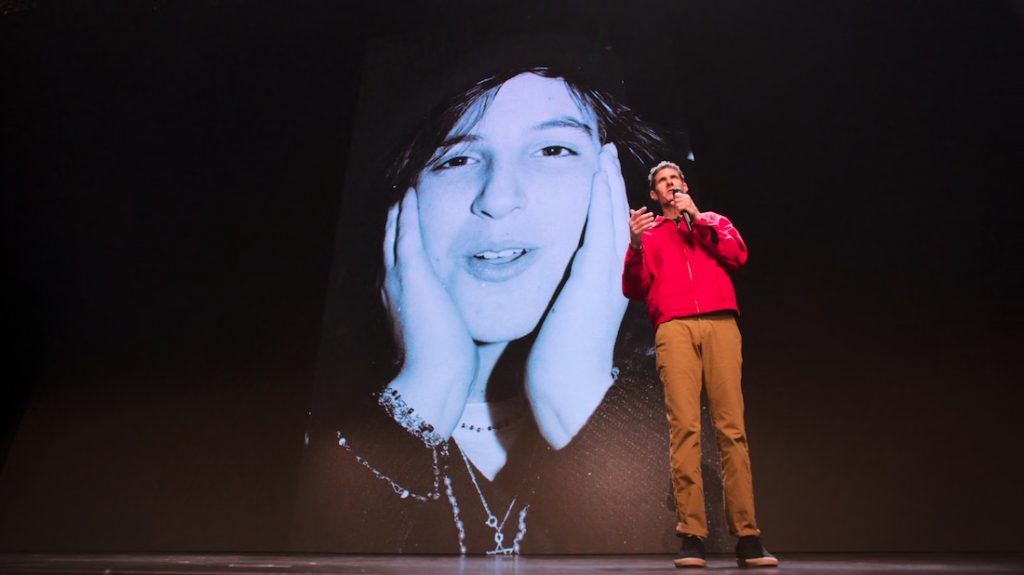
What makes this experience truly special is how effortlessly Diamond and Horovitz command the stage. Diamond is engaging, whereas Horovitz’s natural comedic chops are apparent throughout. Even Jonez has his funny moments as the teleprompter malfunctions. One highlight is the story of their first meeting with Def Jam Records co-founders Russel Simmons and Rick Ruben, where they saw Kurtis Blow learning how to breakdance in their office, spinning on his head surrounded by members of Full Force. Or the fact they picked their management purely because they managed Kenny Rogers and Lionel Richie. “We thought that shit was funny”, says Horowitz. Armed with only a microphone, they’re natural storytellers. The mix of live theatrics and musical history lesson never feels dull or uninspired.
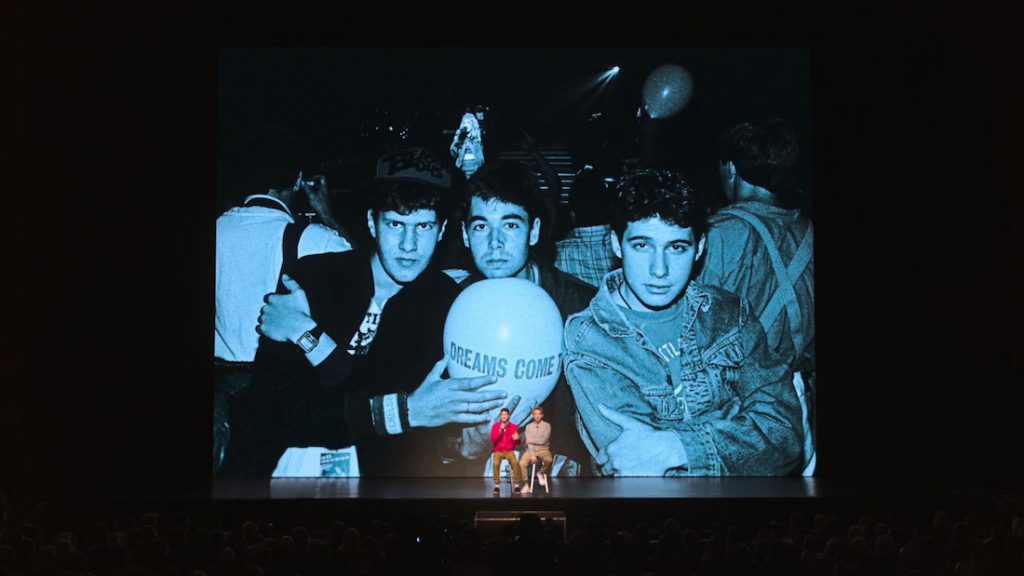
The emotional core of the documentary is Yauch, who’s depicted as the beating heart and musical genius of the group. As entertaining as Diamond and Horovitz are, Yauch’s absence is undeniably felt. Yauch contained so much creativity he was constantly finding new avenues to express himself: from creating The Milarepa Fund and hosting 1996’s Free Tibet charity concert, to founding film production company Oscilloscope Laboratories. The most affecting moments are those were Diamond and Horovitz are barely able to continue as they deal with the trauma of their friend’s death. A particular moment sees Horovitz reciting a passage from the Beastie Boys Book. Choking up, he says to Diamond “you finish it. I can’t.” One can see the tears he’s clearly trying to hold back. These three weren’t just friends… they were brothers.
As expected, there’s not enough time in the Beastie Boys Story to cover their entire career. Restricted to a 119-minute runtime, albums such as Hello Nasty are barely mentioned, while To the 5 Boroughs and The Hot Sauce Committee Part Two are ignored. Sitting here writing this while wearing a Beastie Boys shirt and listening to one of those records, it’s disappointing some parts of the band’s history were left untouched. However, whether you’re a fan of Beastie Boys or not, Spike Jonze’s documentary is a brilliant exploration of one of the most important punk-rap bands of the 20th-century. Beastie Boys Story isn’t a standard music doc filled with talking heads; it’s unplugged, uncensored, and honest. It’ll make you laugh, cry, but most importantly turn the volume up to 11.
USA | 2020 | 119 MINUTES | 2.35:1 • 1.35:1 | COLOUR | ENGLISH

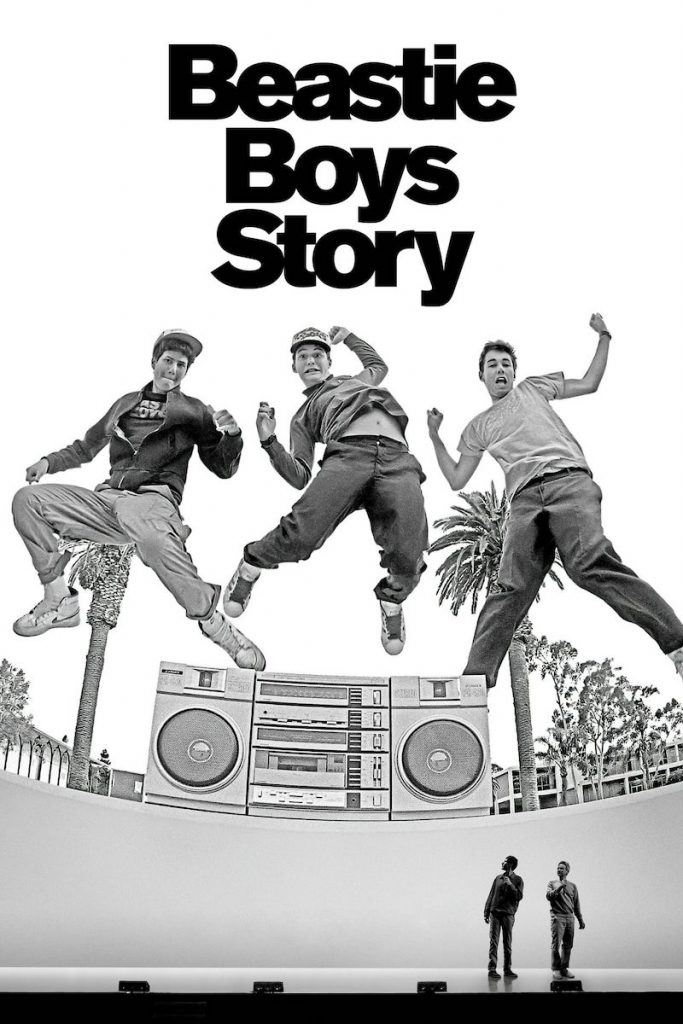
director: Spike Jonze.
writers: Adam Horovitz, Spike Jonze & Mike Diamond.
starring: Adam Horovitz & Mike Diamond.
